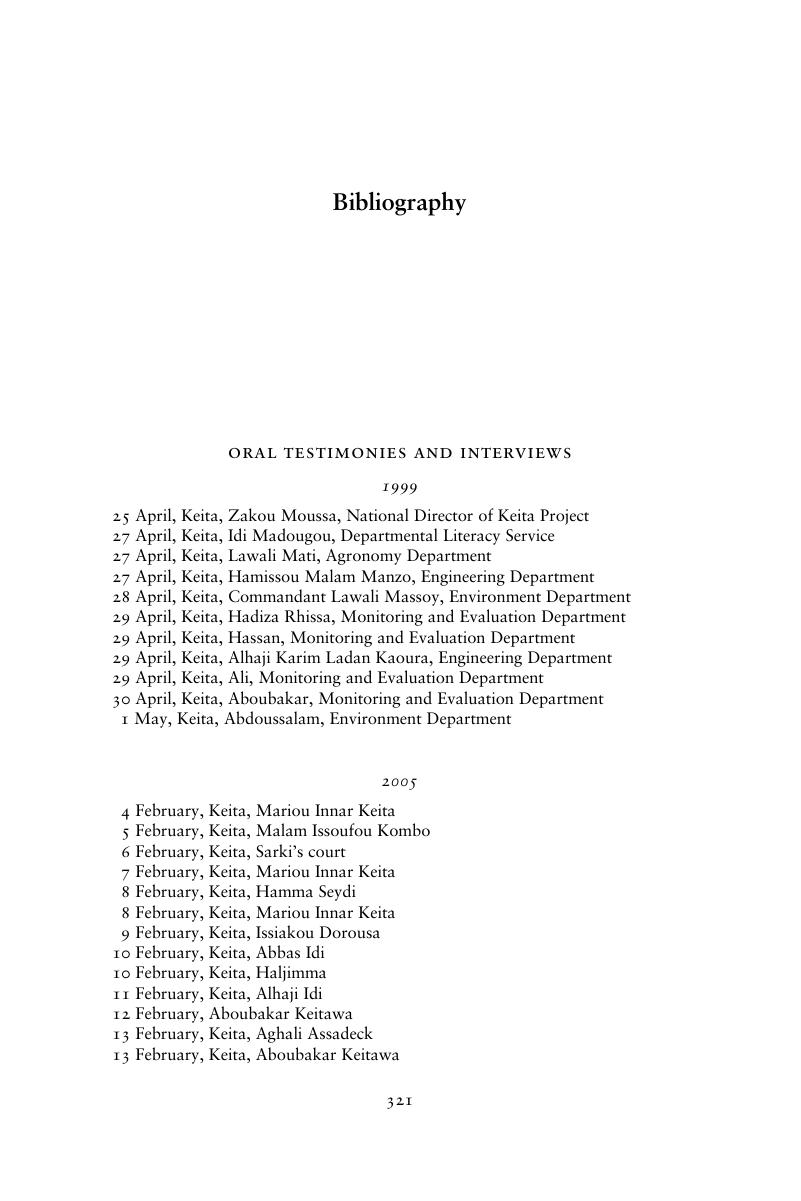Book contents
- From Slavery to AidPolitics, Labour, and Ecology in the Nigerien Sahel, 1800–2000
- Dedication
- Series page
- From Slavery to Aid
- Copyright page
- Contents
- Maps
- Figures
- Preface and Acknowledgements
- Note on Language, Names, and Anonymisation
- Currency Conversion Rates
- Glossary
- Glossary
- 1 At the Desert's Edge
- 2 Between Sokoto and Agadez: Inter-Ethnic Hierarchy in the Nineteenth Century
- 3 Entangled Histories of Colonial Occupation, 1899–1917
- 4 Governing Labour – Slave, Forced, and Migrant, 1918–1945
- 5 The Development of ‘Development’, 1946–1983
- 6 Fighting Against the Desert, 1984–2000
- 7 Between Development and Dependence
- Bibliography
- Index
- Books in This Series
- References
Bibliography
Published online by Cambridge University Press: 05 August 2015
- From Slavery to AidPolitics, Labour, and Ecology in the Nigerien Sahel, 1800–2000
- Dedication
- Series page
- From Slavery to Aid
- Copyright page
- Contents
- Maps
- Figures
- Preface and Acknowledgements
- Note on Language, Names, and Anonymisation
- Currency Conversion Rates
- Glossary
- Glossary
- 1 At the Desert's Edge
- 2 Between Sokoto and Agadez: Inter-Ethnic Hierarchy in the Nineteenth Century
- 3 Entangled Histories of Colonial Occupation, 1899–1917
- 4 Governing Labour – Slave, Forced, and Migrant, 1918–1945
- 5 The Development of ‘Development’, 1946–1983
- 6 Fighting Against the Desert, 1984–2000
- 7 Between Development and Dependence
- Bibliography
- Index
- Books in This Series
- References
Summary

- Type
- Chapter
- Information
- From Slavery to AidPolitics, Labour, and Ecology in the Nigerien Sahel, 1800–2000, pp. 321 - 356Publisher: Cambridge University PressPrint publication year: 2015



